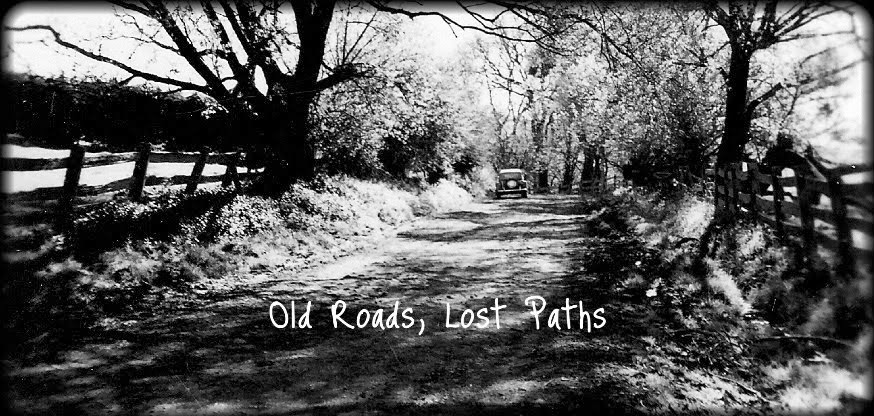Susannah Mortimer. Looking back, our paths had crossed before, I had quite literally walked over her grave and not known it.
On the quest to find all my maternal grandmother's New World roots, its Susannah and her husband Thomas O'Brien that have led me to the very first white settlers of both N.S.W. and Van Diemen's Land, right back in to the late 1700's.
Back in the late 70's, St Matthew's church in Glenorchy, Tasmania, a very pretty little old church, had, for a time, a Pentecostal minister preaching inside its thick sandstone walls. Lots of uni students made the trip from Sandy Bay to St Matthews every Sunday to worship here. Whenever I 'd made the trip to Hobart to visit my brother, I'd go there too with him, he was a uni student at the time, and we'd walk past Susannah Mortimer's headstone with not a clue she was our ggggg grandmother.
Considering we all have 64 of these such endowed grandmothers, I guess our ignorance was excusable.
St Matthews
http://www.gravesoftas.com.au/municipalities/Glenorchy/Glenorchy%20St%20Matthews%20Presbyterian.htm
Susannah is seven generations back from me on my maternal line, thats my mother's mother's mother's, mother's, mother's mother's mother. Phew! Putting it like that though, somehow makes me feel quite clearly and strongly connected on that matriarchal line.
Susannah had stolen a sheep. She was convicted at Exeter Lent Assizes and was sentenced to be hanged. Later this was commuted to 7 years transportation to Australia. In the summer of 1789, 226 women were embarked upon the Lady Juliana, and left England for the other side of the world. This was the first of the human cargo Britain would be shipping to the New World since the arrival of the First Fleet a year earlier. On further research, I discover the Lady Juliana is indeed the famous "floating brothel". I have heard of this ship, but not imagined that I may have had an ancestor who was a passenger. This ship, although having left earlier than the second fleet, is still considered to be a second fleet vessel.
The females on board considered this an opportunity to better their lives and elevate their positions, and that first step was often prostitution, and to become a "wife" to a crew member. Susannah must have done just this as she conceived and gave birth to her daughter to crew man William Screech, on the long voyage out.
On arrival at the new colony, they were met with the Port Jackson settlement at near starvation and settlers angry that a ship had arrived not with supplies and food, but 'damned whores', many who are helpless and a dead weight on the settlement, according to Governor Phillip.
Three weeks later, the second fleet supply ships arrived. These women, brought out as 'breeding stock', proved themselves to be far more than the demeaning labels they were tarred with. They were 'freed from the strictures of traditional society and class, and saw their new home as a chance to create a new life for themselves- a life filled with unprecedented opportunities'.
Susannah was definitely one of these. With conditions at Port Jackson so desperate, 8 weeks later 194 of these male and women convicts were shipped to Norfolk Island. Here Susannah formed a relationship with 1st Fleet Marine settler Thomas O'Brien on his 60 acre farm. Thomas, as a mariner on the First Fleet, was given the option to stay in this new place, and a land grant. They married, had eight more children and ran a successful farm.
In 1987, on holiday, I walked through the old cemetery at Kingston on Norfolk Island. I remember seeing headstones from the late 1700's and being amazed by them. I had no idea Thomas and Susannah's 3rd child Mary Anne was buried there in 1795. Their 9th child, namesake Mary Anne was their child from whom I was descended from.
In 1808, when the Government had decided to close the Norfolk Island settlement, Thomas and Susannah, their children and 250 other settlers were shipped to Hobart aboard the City of Edinburgh. Thomas was granted 100 acres of land, as first class settlers, in the area that became known as O'Briens Bridge and would later be named Glenorchy.
Thomas and Susannah farmed their property and raised their children. An 1819 Muster records Thomas on his farm with ten acres in wheat, one in peas and beans, three in potatoes and forty-six in pasture. His children are recorded as Catherine 27 yrs, unmarried; Agnes 24 and unmarried, Elizabeth 20, unmarried; James 19; William 17; Margaret 12 and Thomas age 11. Where our Mary was, I don't know, she would have been 15. This is Thomas' last paper trail, and it is presumed he died and was buried on the property as three years later in 1822, his two sons James and William are recorded as living on the farm. The following year 1823, our Mary married John Smith. Thomas and Susannah had 63 grandchildren. The ambitions of these "Floating Brothel" women were realised. Despite the authorities' prejudices and sterotypes, they were the women who laid the foundations of our culture and society, worked hard with their husbands building their new homes and lives.
Susannah reached the age of 86 and died in 1846 and was buried in St Matthews. The cemetery was covered by widening of the road, and the headstones moved closer to the church.
The bridge at O'Briens Bridge serviced the local community for nearly half a century, built on the corner of the O'Brien property, crossing Humphrey's Rivulet near the old Wesleyan chapel, which still stands today.
Established in 1831, this is one of Tasmania's oldest churches on land donated by James O'Brien.
Undated photograph (1900-1920) LINC Tasmania NS392-1-783
Duncan Grant 2018 www.churchesoftasmania.com/2018/12/no-298-former-wesleyan-methodist-chapel.html




